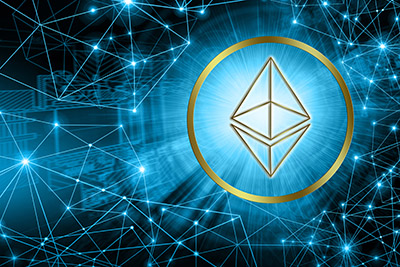
Ethereum 2.0 has been a long-awaited upgrade people have been eyeing to be a major catalyst that may drive the price of Ether. The upgrade is a set of upgrades geared toward improving the scalability, sustainability, and security of Ethereum. Although the upgrade has been in the pipeline since 2014, it is finally up and running.
If you have been wondering what Ethereum 2.0 is and what the new upgrade will mean to the entire Ethereum community, this post is for you. Here, we have highlighted everything you need to know about the Ethereum 2.0 upgrade.
What is Ethereum 2.0?
Also called Eth2 or “Serenity”, Ethereum 2.0 is a set of interconnected upgrades designed to enhance the efficiency, speed, and scalability of the Ethereum network so it can process more transactions while also easing bottlenecks.
Ethereum 2.0 will be launching in three major phases, with the first phase, Phase 0, launched towards the end of 2020. Each phase will improve the performance and functionality of Ethereum in different ways.
What is the difference between Ethereum 2.0 and Ethereum 1.0?
The two major differences between the two versions of Ethereum are Shard Chains and the consensus mechanism used. Ethereum 2.0 uses the Proof of Stake (PoS) consensus mechanism while Ethereum 1.0 uses Proof of Work (PoW).
- Proof of Stake: While PoW relies on electricity (work) and physical computing power (miners) to build blocks on the Ethereum blockchain, PoS comes as an upgrade to this consensus mechanism. Instead of relying on physical miners and electricity, it uses validators who deposit a certain amount of Ether to participate in building blocks on the Etherum blockchain. That comes with improved scalability, security, and energy efficiency.
- Shard chains: These are scalability mechanisms employed by the Ethereum blockchain to improve the throughput of the network. The Shard chain built into Ethereum 2.0 makes it easier to divide data among many nodes in order to have faster transactions on the blockchain. That means with Ethereum 2.0, transactions are processed in parallel rather than consecutively, resulting in higher throughput. Shard Chains are expected to be part of Phase 1 of Ethereum 2.0.
What improvements should you expect from Ethereum 2.0?
With the Ethereum 2.0 upgrade, Ethereum users should expect to experience scalability, security, and sustainability. The upgrade will not erase any of the data history, asset ownership, and transaction records of the Ethereum 1.0 chain. Users are expected to enjoy the same functionality Ethereum 1.0 enjoys, and much more.
With Ethereum 1.0, the network only consists of a single chain with consecutive blocks. The network can only support around 30 transactions per second. Though this is secure, it is very slow and not efficient. But with the Shard Chains implemented in Ethereum 2.0, the network will handle up to 100,000 transactions per second.
Who is developing Ethereum 2.0?
The upgrade is conducted by hundreds of people. The whole Ethereum Foundation research team and other research and implementation teams are responsible for the development. More than 7 independent teams are collaborating on the Ethereum Foundation GitHub pages to build Ethereum 2.0 in a variety of programming languages for different use cases.
What is the release date of Ethereum 2.0?
The first phase of Ethereum 2.0 was launched on December 1, 2020, and Phase 1 of the upgrade is anticipated to launch in 2021. The last phase of the upgrade – the Phase 2 upgrade is also anticipated to roll out in 2021 or later.
How is the Ethereum 2.0 upgrade planned to happen?
The upgrade is planned to be completed in three major phases; Phase 0, Phase 1, and Phase 2.
Phase 0: this first phase will feature the implementation of “Beacon Chain.” This stores and manages the registry of validators, and going to be using the PoS consensus mechanism too. The present PoW will not be done away with immediately but will be running alongside the new Ethereum PoS chain, ensuring there is no break in data continuity.
Phase 1: this phase will commence in 2021, and will feature the integration of Shard Chains. This will improve transaction time on the network as Shard Chains will allow more than 100,000 to run per second on the Ethereum network compared to the present 30 transactions per second experienced on Ethereum 1.0.
Phase 2: this is the third and last phase of the Ethereum 2.0 upgrade, and it’s going to launch in 2021 as well. Although the things to expect in this phase are not clear yet, users are likely going to be experiencing the addition of ether accounts and enabling withdrawals and transfers. The PoW consensus will also be finally turned off at this phase.
How does Proof of Stake differ from Proof of Work?
Like other cryptocurrencies, Ethereum currently uses the Proof of Work consensus mechanism. With that, miners are required to use computer hardware processing power to solve complex puzzles and verify new transactions. These miners are hence rewarded with ETH for their hard work. However, this process requires a lot of energy.
On the other hand, PoS doesn’t require miners to verify a transaction; it is done by validators who stake crypto for the right to do the job. These validators are chosen based on the amount of crypto they have and for how long they’ve held it. The validators are afterward rewarded for helping to validate a block and add it to the blockchain.
The major advantage of PoS over PoW is that it is far more energy-efficient and doesn’t need a lot of computing power to secure the blockchain.
How could Ethereum 2.0 affect Ethereum’s price?
Since the new upgrade will be bringing more scalability, that means there will be more usage too, which will, in turn, bring more demand. This should propel Ethereum rate to new heights. Ethereum 2.0 will also bring speedy transactions and hence usher in a completely seamless experience for the next billion people.
There will also be reduced transaction fees and increased throughput since there will be a significant reduction in gas fees. This will likely have a long-term bullish impact on the price of ETH.
Story by Ruby Jessica










